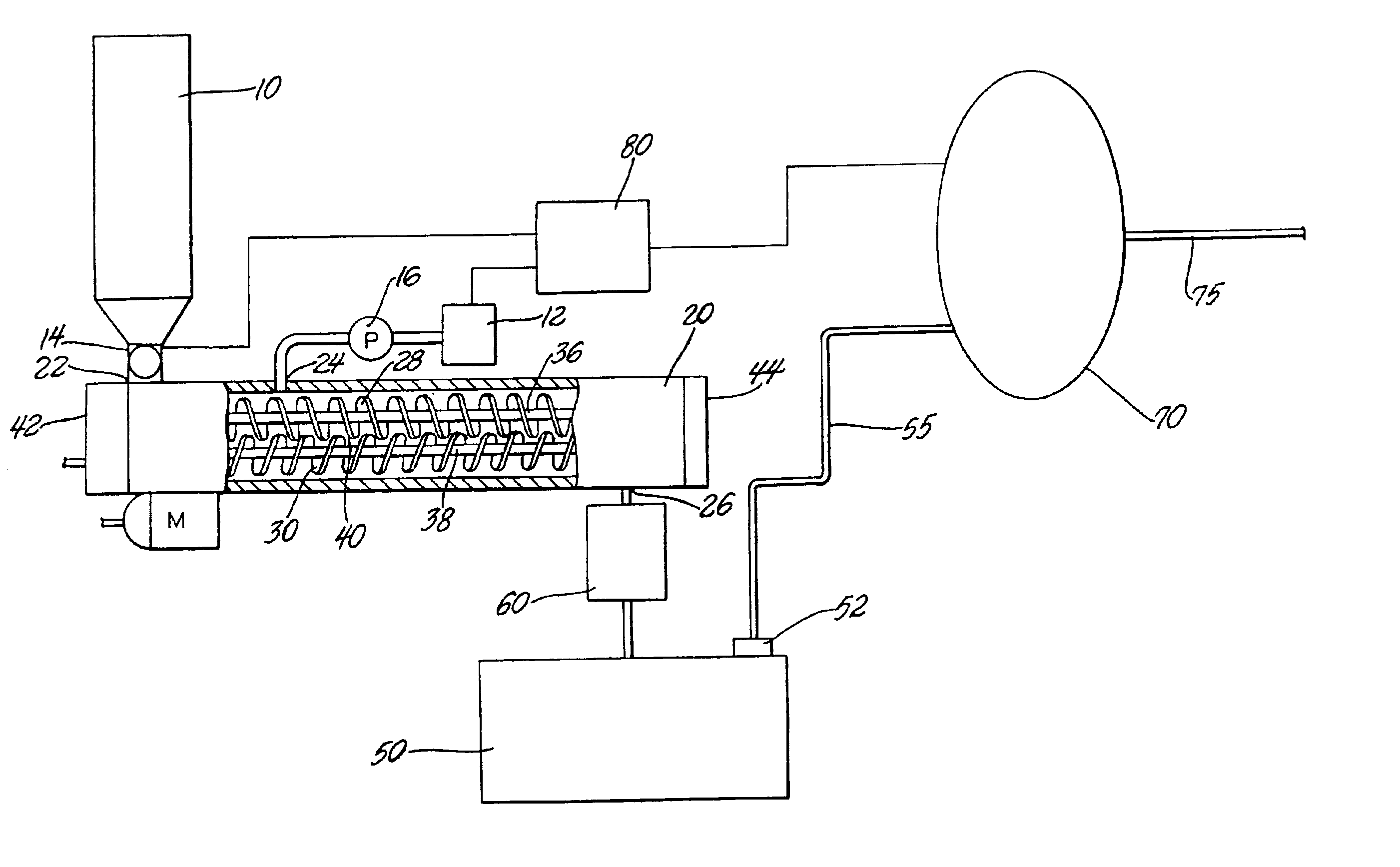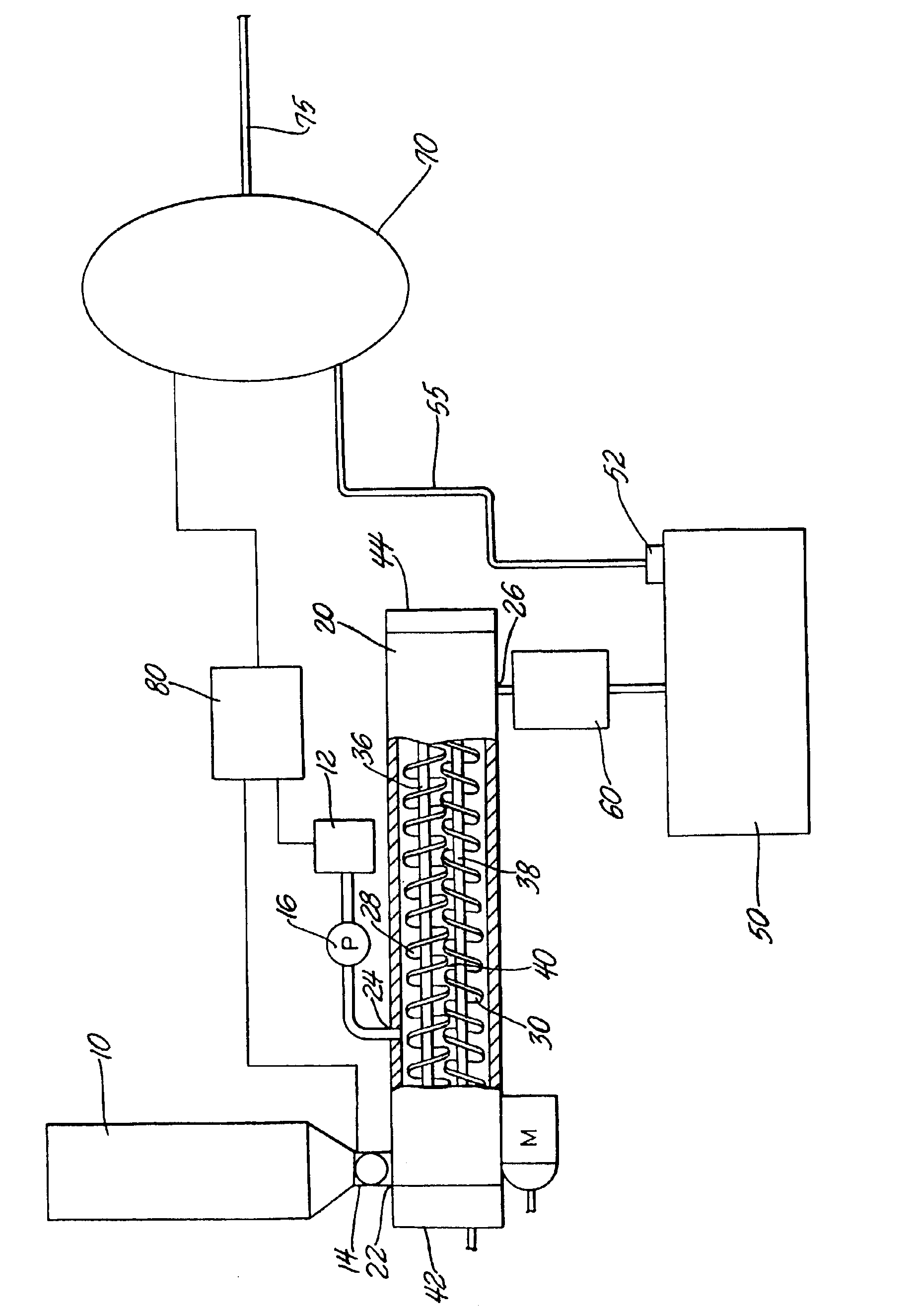Method of generating hydrogen from borohydrides and water
a technology of borohydride and hydrogen, applied in the direction of electric generators, transportation and packaging, rotary stirring mixers, etc., can solve the problems of high pressure, heavy vessels, difficulty in storage, etc., and achieve the effect of convenient and compact storage or packing
- Summary
- Abstract
- Description
- Claims
- Application Information
AI Technical Summary
Benefits of technology
Problems solved by technology
Method used
Image
Examples
Embodiment Construction
A method is provided that generates hydrogen to power a hydrogen consuming device, e.g., a fuel cell. Hydrogen is stored on-board a motorized vehicle in the form of dry lithium borohydride and / or sodium borohydride pellets of essentially uniform size and mass, or in the form of a powder. Lithium borohydride is preferred for use in the method of this invention because it has the highest mass of hydrogen for a given mass of hydride, and is the lightest borohydride available. Furthermore, it generates substantial heat upon hydrolysis reducing the requirement for a supplemental heat source.
Hydrogen is generated by hydrolyzing the borohydride using a stoichiometrically balanced (i.e., substantially chemically balanced) amounts of borohydride and water. More specifically, the optimal yield of hydrogen gas is generated by maintaining a 1.6 to 2.5 parts by mass of water per 1 part of lithium borohydride mixture, or 1 to 1.5 parts by mass of water per 1 part of sodium borohydride mixture. Up...
PUM
| Property | Measurement | Unit |
|---|---|---|
| temperature | aaaaa | aaaaa |
| temperatures | aaaaa | aaaaa |
| temperature | aaaaa | aaaaa |
Abstract
Description
Claims
Application Information
 Login to View More
Login to View More - R&D
- Intellectual Property
- Life Sciences
- Materials
- Tech Scout
- Unparalleled Data Quality
- Higher Quality Content
- 60% Fewer Hallucinations
Browse by: Latest US Patents, China's latest patents, Technical Efficacy Thesaurus, Application Domain, Technology Topic, Popular Technical Reports.
© 2025 PatSnap. All rights reserved.Legal|Privacy policy|Modern Slavery Act Transparency Statement|Sitemap|About US| Contact US: help@patsnap.com


